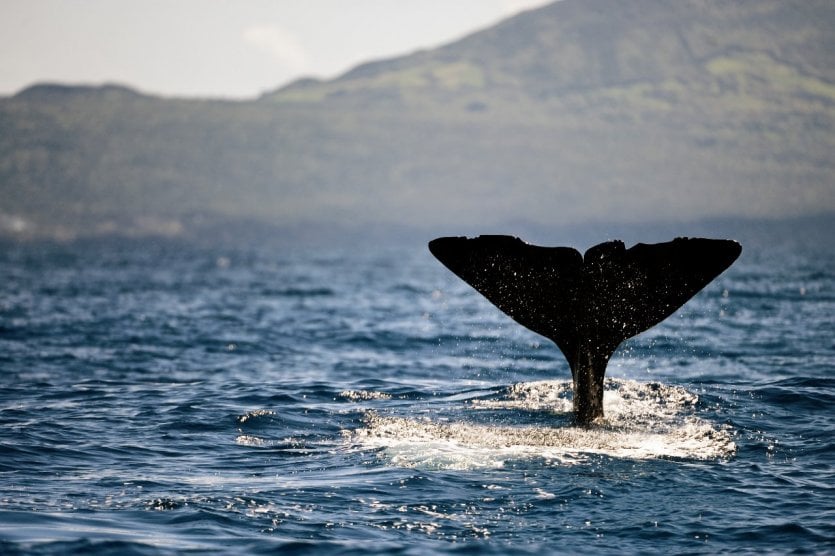
Fancy a vacation in Portugal? Then head for the Azores! Often referred to for its famous anticyclone, star of weather reports, this archipelago remains a hidden treasure in the North Atlantic. Its 9 islands, bordered by deep blue waters, boast stunning natural beauty, far off the beaten track. Splendid beaches, surprising lakes and blue whale sightings are all on offer. The Azores are a must-see destination for those in search of escape and authenticity. Petit Futé invites you to discover the must-sees of this archipelago, for an experience rich in discovery and wonder. Prepare to be charmed by the diversity and striking beauty of these unique islands. The Azores are also one of our top destinations to visit in January 2024!
1- Hiking in São Jorge
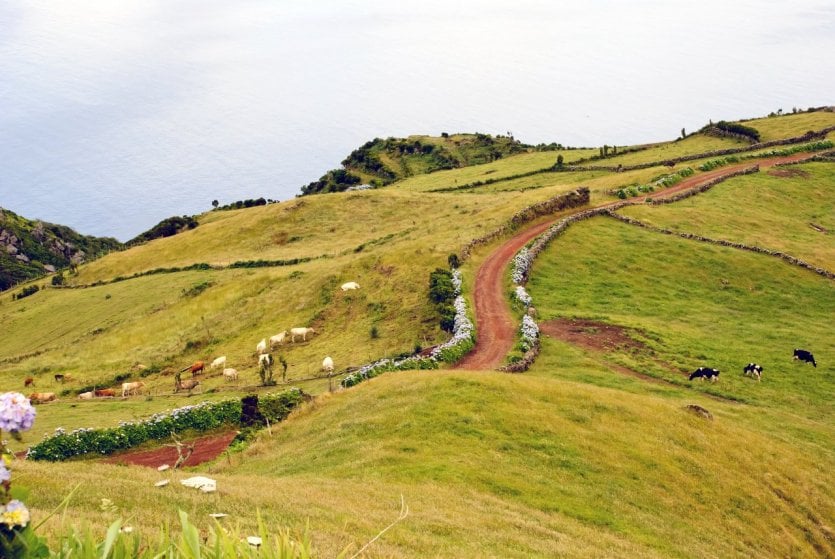
The island of São Jorge is ideal for walkers: 54 km long and just 6.9 km wide, it offers landscapes of striking contrasts. The center is dominated by the central cordillera that crosses the island, while the jagged coasts are dotted with fajãs. These small platforms are the result of land or lava subsidence, and there are over forty of them on the island. They all enjoy a micro-climate that's ideal for growing crops, and there's even a coffee plantation! Book now your hike in the valleys of São Jorge!
2- See Flores, the "island of flowers
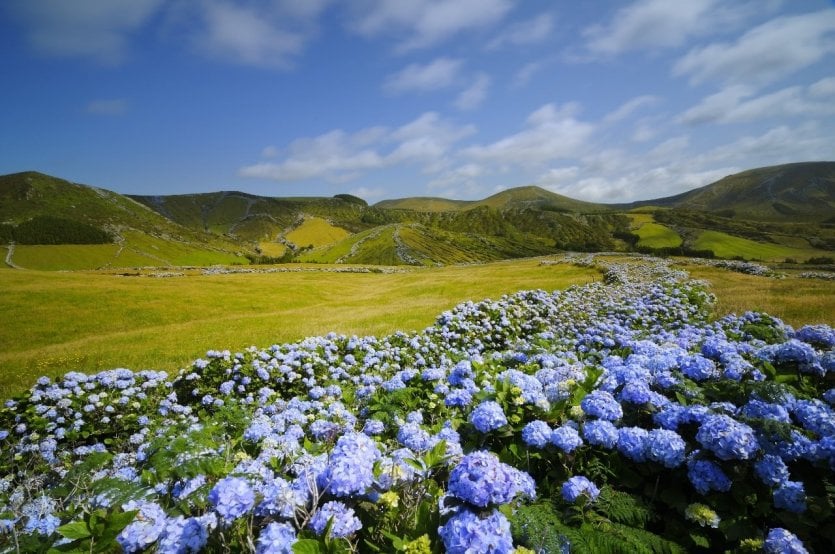
The westernmost island of the archipelago, Flores enjoys a warm, humid climate all year round, which is the source of its lush vegetation. Its valleys, rivers and forests make it a veritable garden where azaleas and hydrangeas reign supreme. It's also the ideal place for scuba diving: the waters are rich in fish and cetaceans, and are full of surprises! A real little paradise, a must-see in the Azores. Once you've arrived in Flores, take the opportunity to visit the Mayan ruins of Tikal !
3- Corvo, island at the end of the world
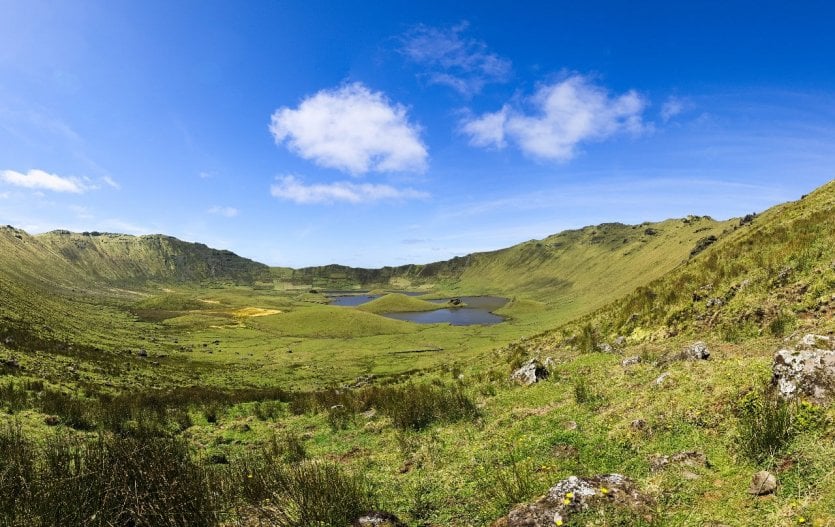
The smallest of the archipelago's islands, Corvo is also the least populated and certainly the wildest. Its only village, Vilà do Corvo, is built on a fajãs, the island's only flat surface. The picturesque village is distinguished by its black stone facades and narrow streets. Corvo also offers great hiking opportunities, notably to the Caldeirão crater, the emblematic landscape of this island-volcano.
4- Angra do Heroismo, the pearl of Terceira Island
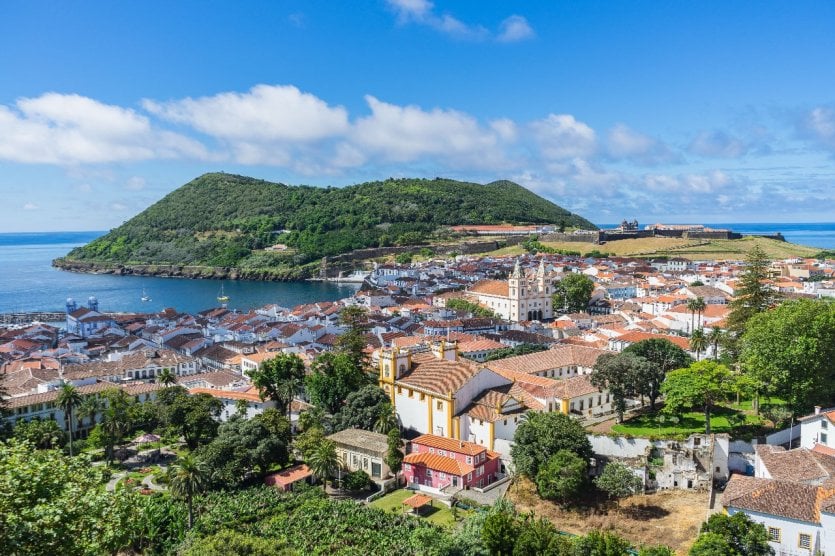
Capital of the Azores from 1766 to 1832, Angra do Heroismo is a UNESCO World Heritage Site for its 16th- and 17th-century colonial architecture. Its majestic cathedral is the largest church in the archipelago, dominating the entire historic town center. Badly damaged by a violent earthquake in 1980, Angra do Heroismo managed to rise from the ashes and today remains one of the most interesting towns in the Azores. Explore Angra do Heroísmo with the help of a local guide by booking here here!
5- Discover Pico, the "black island
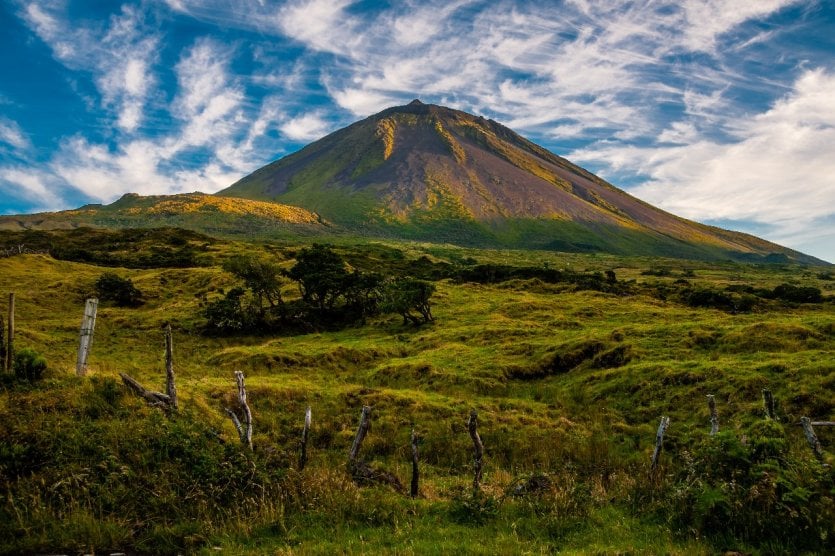
The second largest island in the Azores, Pico is dominated by its enormous volcano. It is Portugal's highest point, rising to 2,351 m and offering endless hiking possibilities! Here, the black basalt that surrounds the green fields contrasts with the white of the houses and the blue of the sea... More than just a " black island ", Pico could well be a colorful one! Its renowned vineyards, listed as a Unesco World Heritage Site, attract oenophiles from all over the world who come to taste the verdelho, the island's typical wine. One of the most impressive sights in the Azores!
6- Sete Cidades, between blue and green
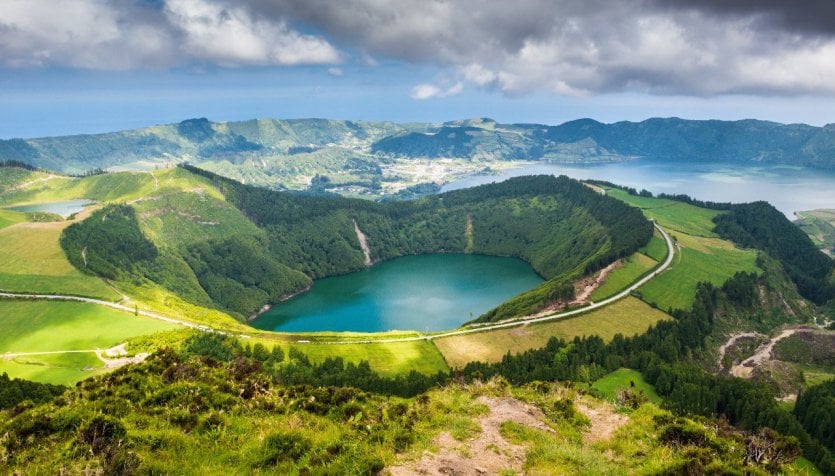
Sete Cidades is a charming little village on the island of São Miguel, but it's also a volcano, rising to 865 m above sea level. Surrounded by a caldera five kilometers in diameter, it is home to several lakes, including two main ones: lagoa verde - the green lake - and lagoa azul - the blue lake. It is said that the splendid colors of their waters are due to the tears shed by a princess and a shepherd in the midst of an impossible love affair... The steep, flower-covered slopes are breathtakingly beautiful. The ideal place for hiking! Discover Sete Cidades from the water and on land with a bike and kayak trip into the heart of the crater !
7- Dive the islet of Vila Franca do Campo
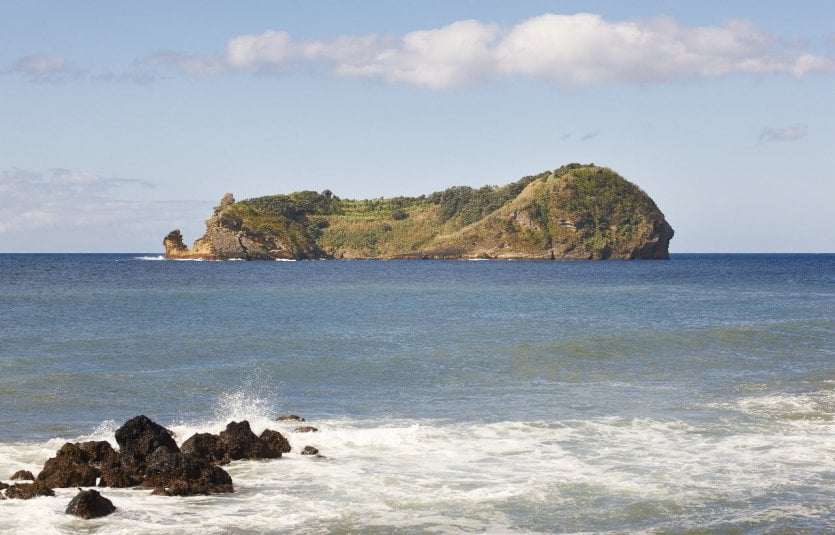
A veritable little paradise, the is let lies opposite the village of Vila Franca do Campo, 1 km from the coast. A choice nature reserve, it boasts a saltwater cove that attracts divers for its splendid seabed. Numerous shuttles run daily to and from the port of Vila Franca do Campo. Please note, however, that the site is limited to 400 visitors to preserve its wild nature!
8- Taste volcanic cuisine at lagoa das Furnas
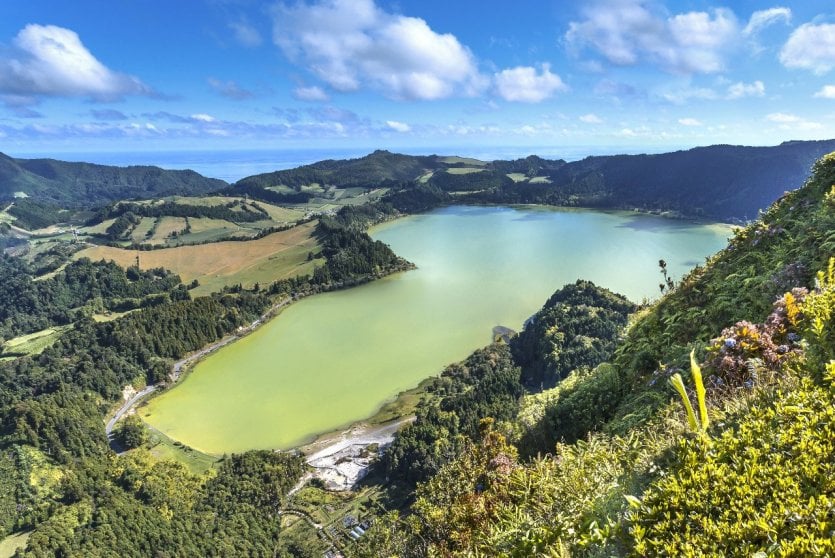
In the Azores, there's something for everyone! It would be a shame not to try the archipelago's signature dish: cozido à portuguesa, a Portuguese stew. If the dish is succulent, it's above all the way it's cooked that's intriguing: the pot is lowered into a deep hole, close to the geysers of lagoa das Furnas, and covered with earth. After 5 or 7 hours of cooking, it's ready! 100% authentic, eco-friendly cooking!
9- Watch blue whales and sperm whales
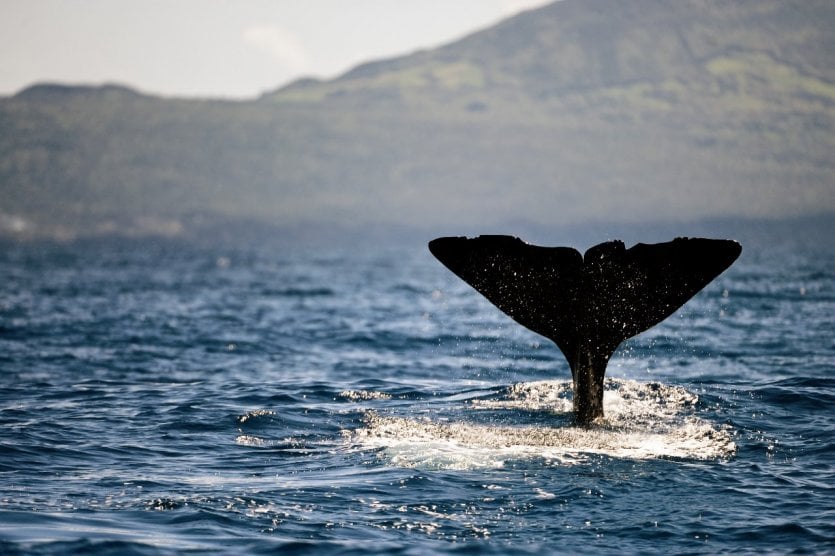
Many cetaceans come to feed in the fish-filled waters of the Azores, especially between June and September. The islands of Faial and Pico are ideal for whale-watching. These three- or four-hour sea outings in the Azores on specially equipped zodiacs take visitors along the path of sperm whales and blue whales, in a totally peaceful way to get the chance to see them. Arm yourself with your camera and let yourself be seduced by these sumptuous giants of the sea! Book your whale-watching boat trip from Pico !
10- Lagoa do Fogo, bathing in a volcano
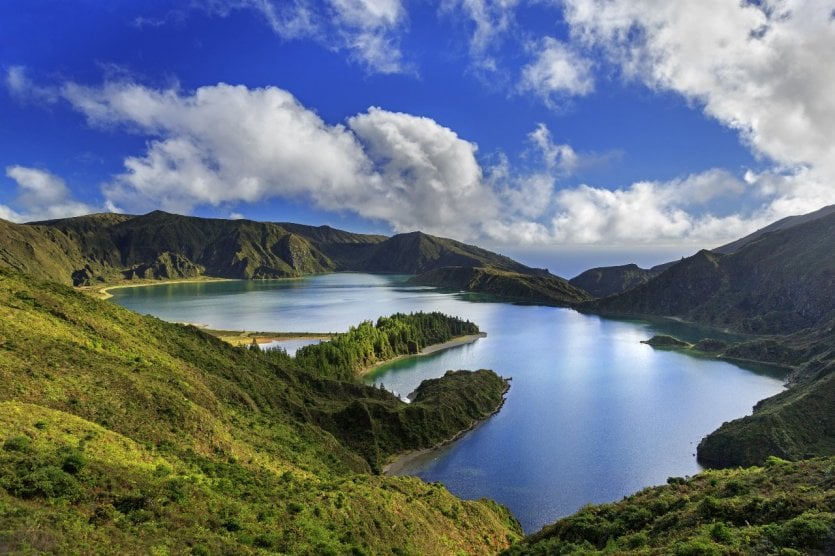
At the center of the island of São Miguel, the lagoa do fogo enchants travelers. The lake was formed in the hollow of the mountains after a spectacular volcanic eruption in the 16th century. It is in fact the crater of a dormant volcano, Agua de Pau, which filled up with rainwater. Near the lake, the Caldeira Velha waterfall and its gushing hot water invite you to take a dip... Beware, however, of the fiery fumaroles that may surprise you! A must-see site in the Azores!
11- Santa Bárbara beach, São Miguel
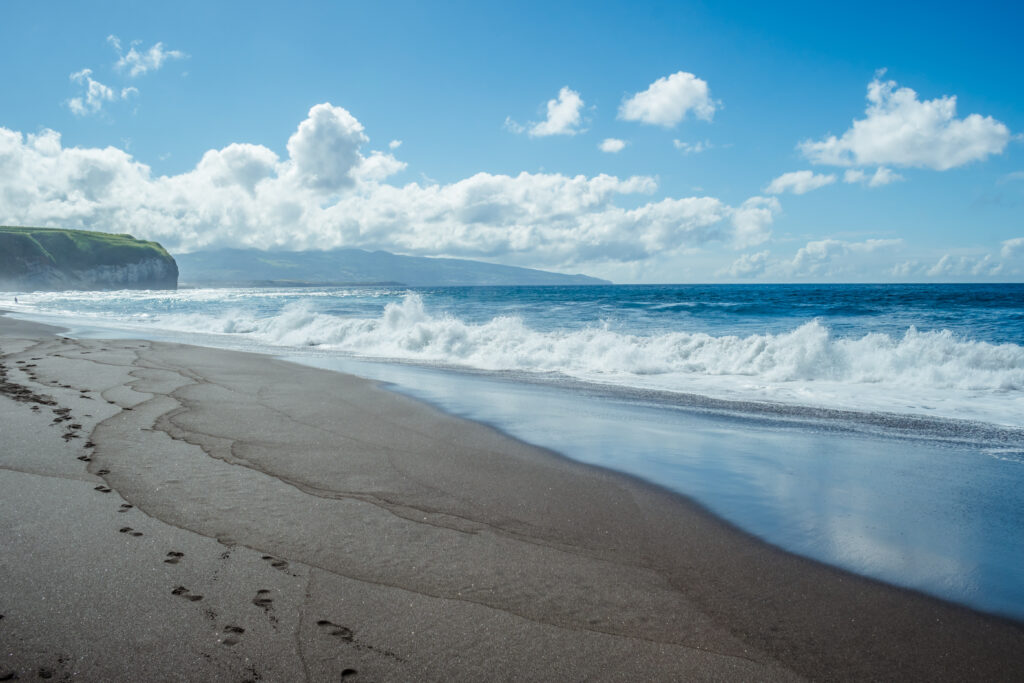
Santa Bárbara beach, on the north coast of São Miguel, is a jewel of the Azores. This stretch of black sand stretches along the Atlantic Ocean, providing an original setting for swimming, sunbathing and, above all, surfing. Renowned for its impressive waves, it attracts surfers from all over the world, making it a must-see spot for surfing enthusiasts. Its unspoilt environment gives it an atmosphere of tranquility and escape. In summer, a variety of sporting and cultural events take place here, giving the area a lively atmosphere. Santa Bárbara is not just a beach destination, it's an experience where nature, sport and relaxation meet in harmony.
12- Gruta das Torres, Pico
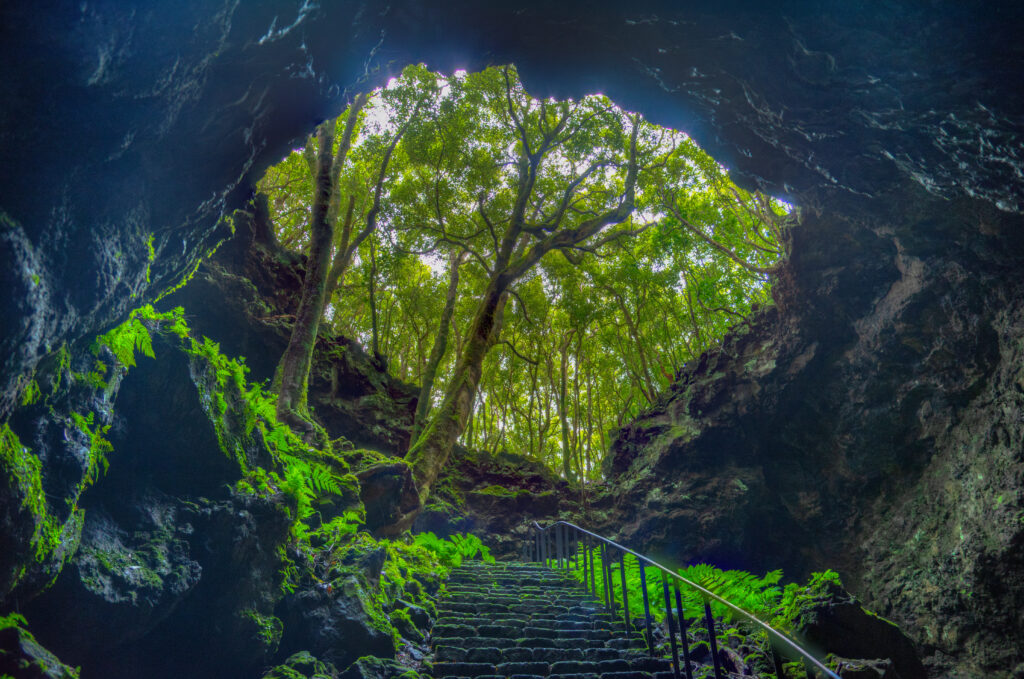
Gruta das Torres, on the Azores island of Pico, is a geological wonder to be explored. This system of lava caves, the longest in the archipelago, plunges you into a captivating underground adventure. Inside, visitors discover a fascinating world of rock formations, lava tubes and volcanic stalactites. The guided tour through the cave will teach you more about Pico's geological history and the volcanic phenomena that have shaped the island. Equipped with helmets and lamps, explorers of all ages can immerse themselves in this unique experience and see some of the most original scenery in the Azores. The Gruta das Torres is a must for those seeking to discover the lesser-known, more adventurous aspects of the Azores.
13- Capelinhos lighthouse, Faial
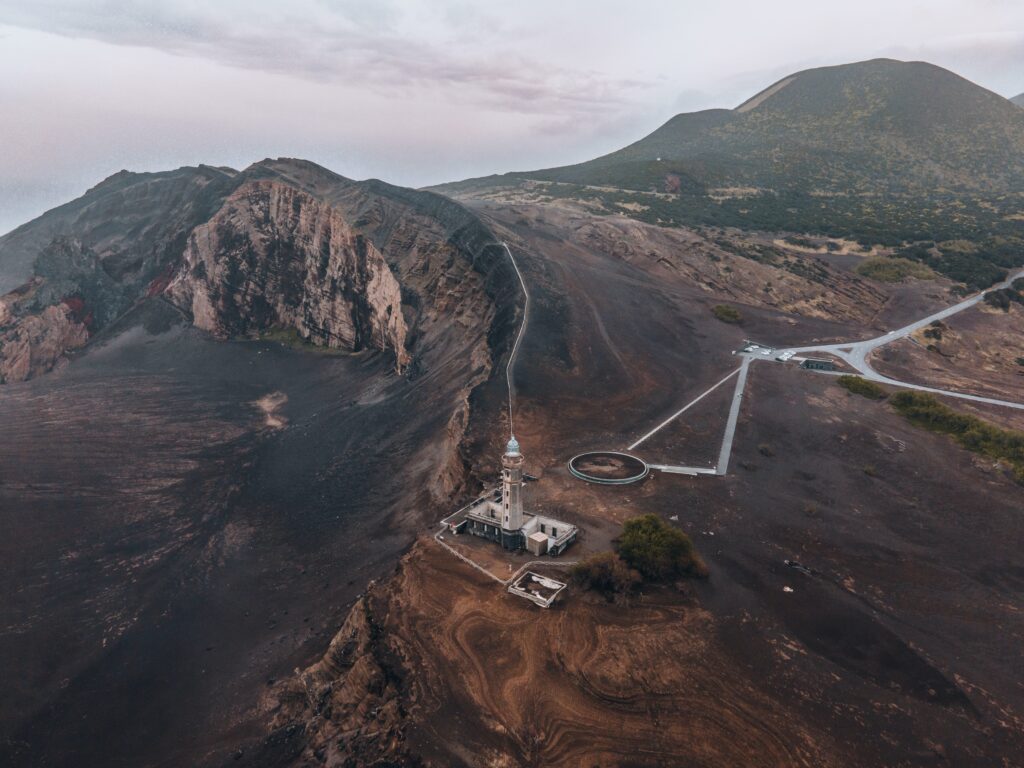
The Capelinhos lighthouse, on the island of Faial in the Azores, is a site of striking beauty and great historical importance. Witness to the volcanic eruption of 1957-1958, this lighthouse stands on a lunar landscape, giving way to an extraordinary natural spectacle. A visit to the lighthouse and its museum offers a fascinating insight into the geological history of the region. The surroundings form an almost surreal setting, combining vegetation and volcanic terrain. The site gives access to spectacular panoramic views of the ocean and neighboring islands, making it a prime location for photographers and lovers of unique landscapes. Capelinhos is not just a lighthouse, it's a symbol of the dynamic and ever-changing beauty of the archipelago to be seen in the Azores.
14- The Sanjoaninas Festival, Terceira

The Festival de Sanjoaninas, celebrated on the Azores island of Terceira, is an explosion of color, culture and tradition. This annual festival, in honor of Saint John, transforms the town of Angra do Heroísmo into a veritable carnival. For a week,the streets come alive with parades, concerts and folk dancing. House facades are adorned with decorations, and the aromas of local cuisine fill the air. The festival also features traditional bullfights, live music and fireworks. The Festival de Sanjoaninas is a cultural heritage immersion to be seen in the Azores, offering a unique insight into the richness of local traditions.
15- Biscoitos, Terceira
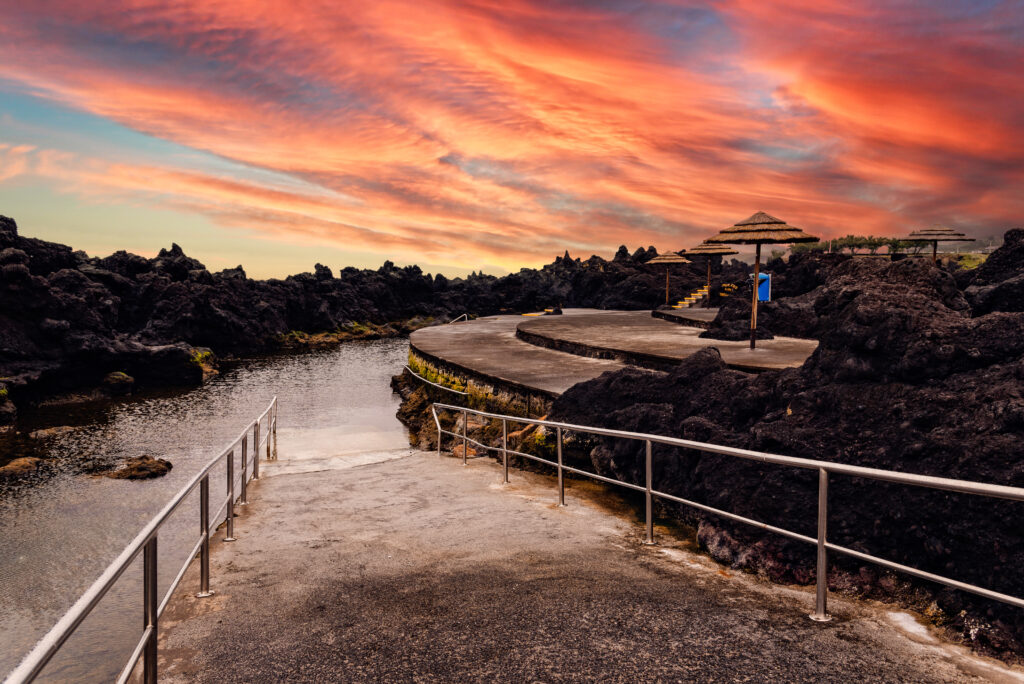
Biscoitos, on the Azores island of Terceira, is a must-see destination for nature and wine lovers. The village is famous for its unique natural pools, carved out of black volcanic rock, providing an original bathing experience. These natural pools, fed by the Atlantic Ocean, are surrounded by spectacular scenery. Biscoitos is also renowned for its wine production, notably Verdelho wine, with vineyards stretching across fertile land. Visitors can explore local wineries and taste the region's distinctive wines. Surrounding hiking trails allow you to explore the island and discover all its beauty. Biscoitos harmoniously combines relaxation, culture and adventure, making it an unforgettable stopover on a trip to Terceira.
See also our article: What to do in Portugal? The 25 most beautiful places to visit!
When to go whale-watching in the Azores?
- April to June: This is the peak of the whale-watching season. During this period, you have a good chance of seeing humpback, sperm and sometimes blue whales, as well as various species of dolphin.
- July to August: Although these months correspond to the peak tourist season, whale watching remains excellent. Weather conditions are generally favorable, making sea excursions more enjoyable.
- September to October: The end of the whale-watching season is always a good time, with fewer tourists and nature as generous as ever.
When is the best time to visit the Azores?
- May to September: This is the peak tourist season, with warmer temperatures and less rain. It's ideal for hiking, outdoor activities, whale and dolphin watching, and swimming. The days are longer, so outdoor activities can be enjoyed to the full.
- July and August: These are the hottest and busiest months. It's perfect for those looking to enjoy beaches and local festivals, although it can also mean more crowds and higher prices.
- April, May, September and October: These months make up the mid-season. The weather is generally pleasant, with fewer tourists. This is a good time for those looking to avoid the crowds and enjoy milder temperatures. Nature is in full bloom in spring, while autumn offers brightly colored landscapes.
- October to April: The low season presents wetter, cooler conditions, but it's the ideal time for those looking to avoid the crowds and enjoy the Azores in a more tranquil setting. It's also a good time to watch migratory birds.
Which is the most beautiful island in the Azores?
- São Miguel: Often considered the most popular island, São Miguel is famous for its crater lakes, hot springs and lush green landscapes. It's an excellent destination for those seeking a mix of natural beauty, activities and amenities.
- Pico: Known as home to Portugal's highest peak, Mount Pico, this island attracts hikers and wine lovers alike. Its landscape of UNESCO World Heritage vineyards is breathtaking.
- Terceira: With its historic center of Angra do Heroísmo, a UNESCO World Heritage Site, and vibrant cultural traditions, Terceira is rich in history and architecture.


